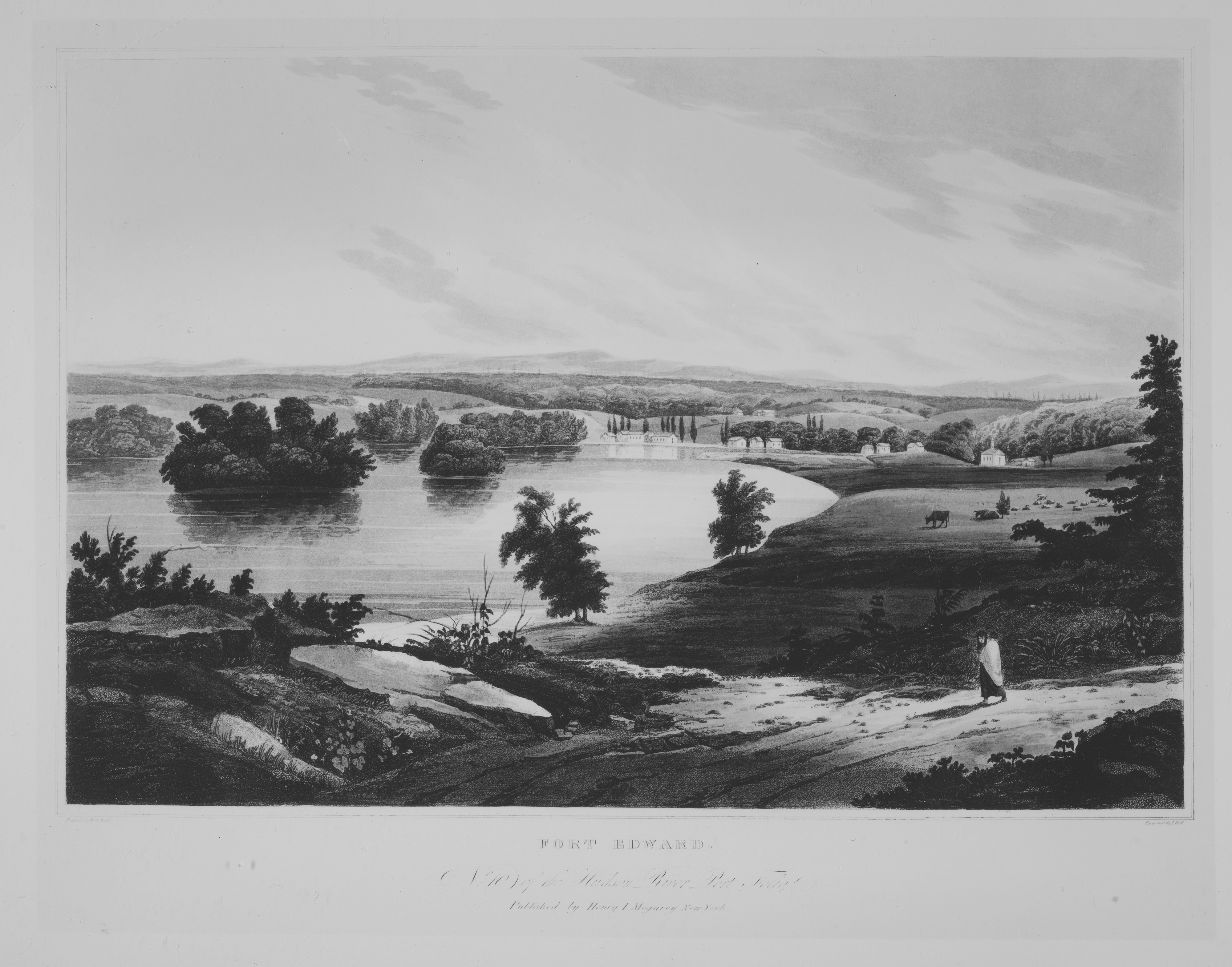Fort Edward (No. 10 of The Hudson River Portfolio)
Etcher John Hill American, born England
after William Guy Wall Irish
Publisher Henry J. Megarey American
Not on view
We look upriver in this print from a turnpike road that descends towards the Hudson, eleven miles north of the Fort Miller Bridge (the work is out of order in the Portfolio, and should follow plate 7 to replicate an accurate descent of the reiver). The related text emphasizes the region's tumultuous history, noting that although, "the ploughshare now peacefully turns up the soil moistened by the blood of thousands...the memory of days of glorious enterprise remains vigorous...and the scene of their operation will be held sacred to remotest ages." The print comes from a monument of American printmaking produced through the collaboration of artists, a writer, and publishers. In the summer of 1820, the Irish-born William Guy Wall toured and sketched along the Hudson then painted large watercolors. Prints of equal scale were proposed—to be issued to subscribers in sets of four—and John Rubens Smith hired to work the plates. Almost immediately, Smith was replaced by the skilled London-trained aquatint engraver John Hill, who finished the first four plates, and produced sixteen more by 1825. Over the next decade, the popularity of the Portfolio stimulated new appreciation for American landscape, and prepared the way for the Hudson River School.
Due to rights restrictions, this image cannot be enlarged, viewed at full screen, or downloaded.
This artwork is meant to be viewed from right to left. Scroll left to view more.




